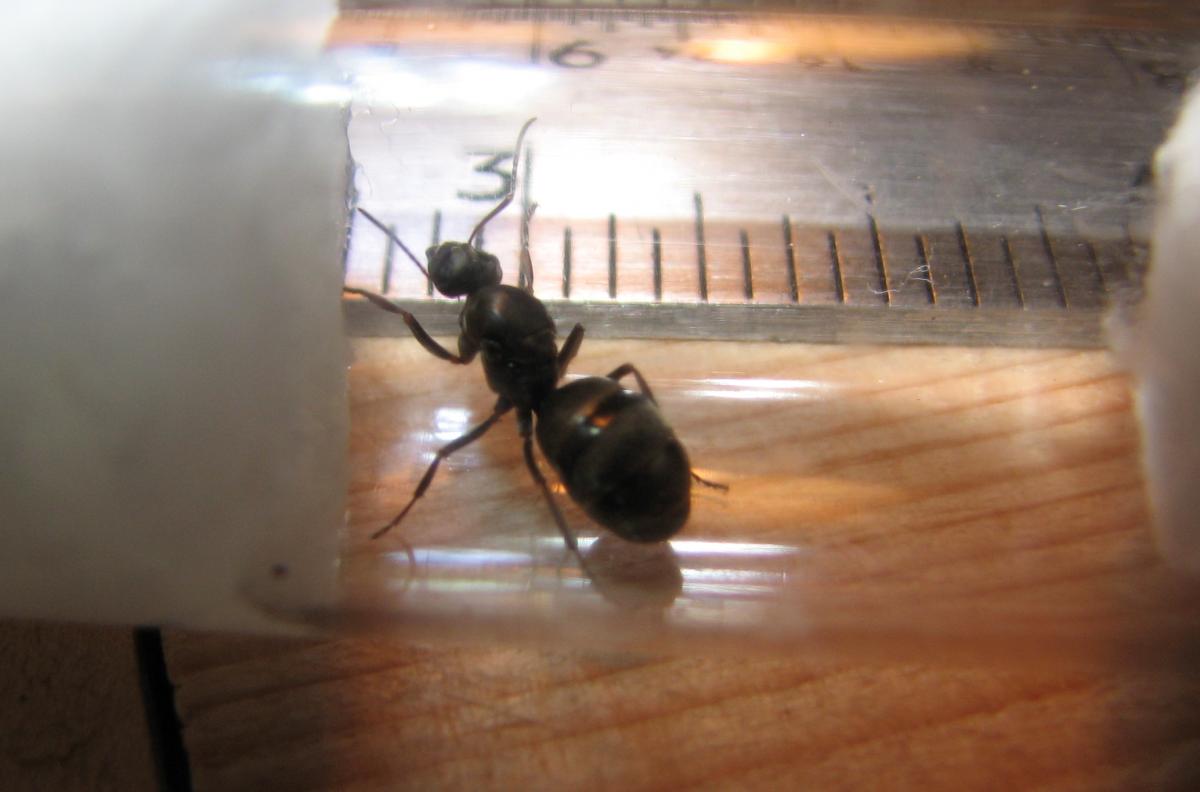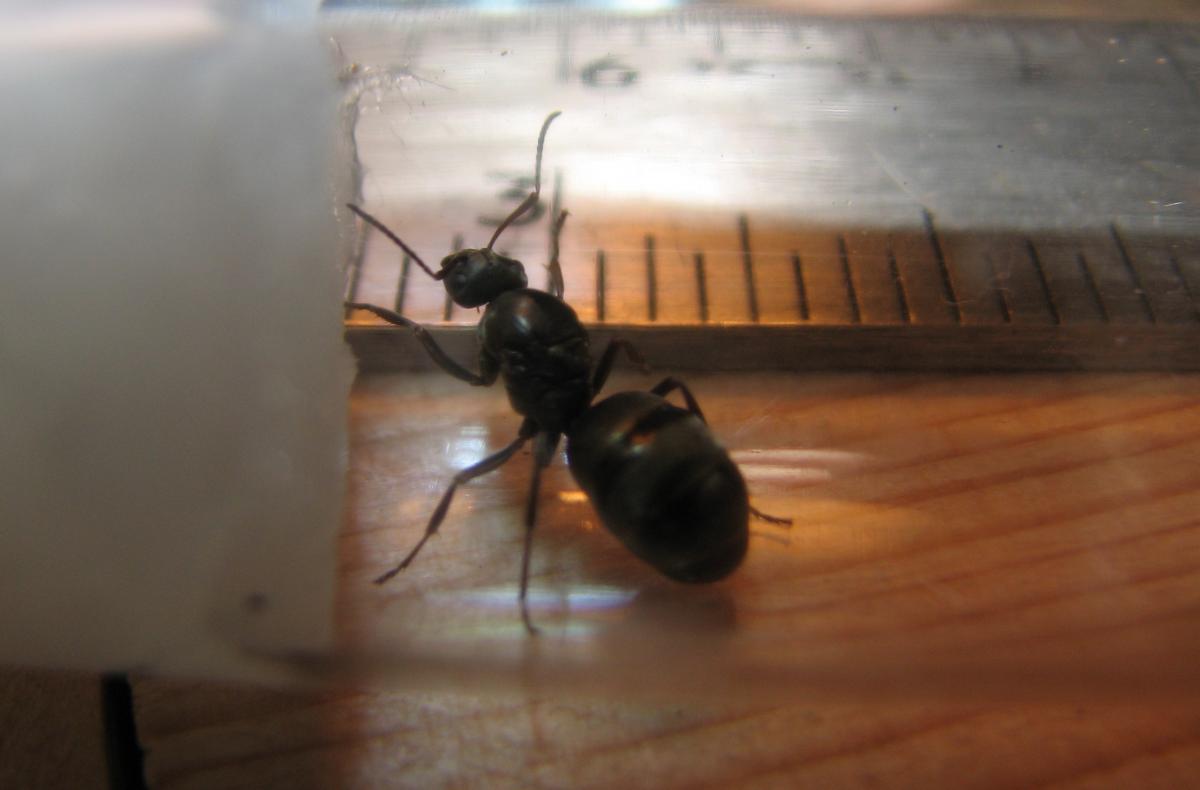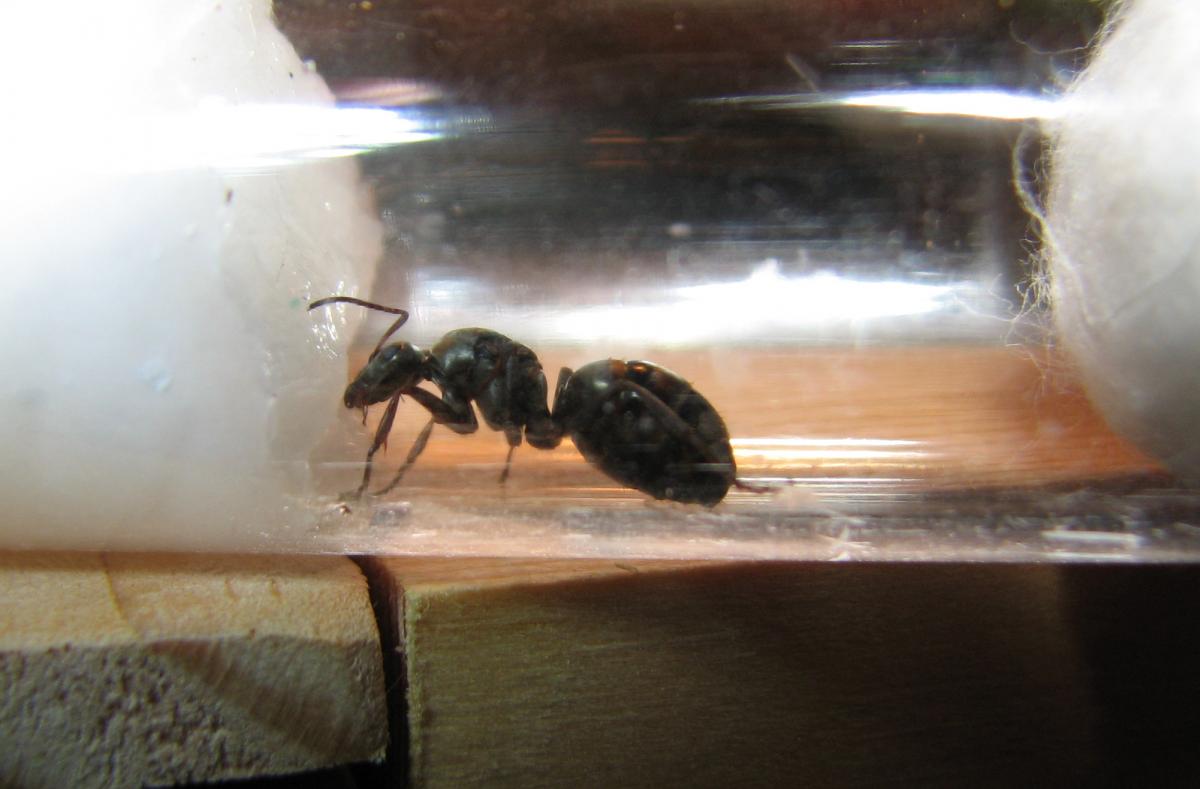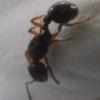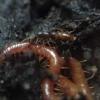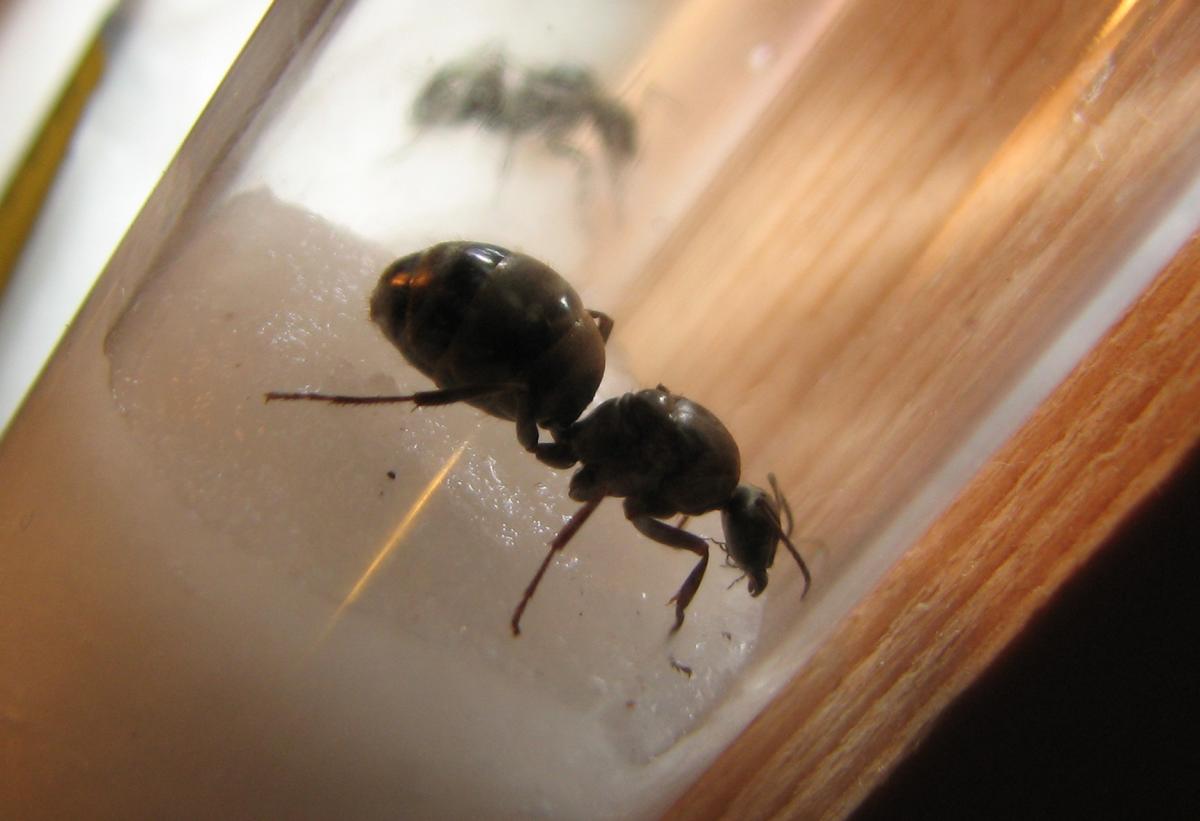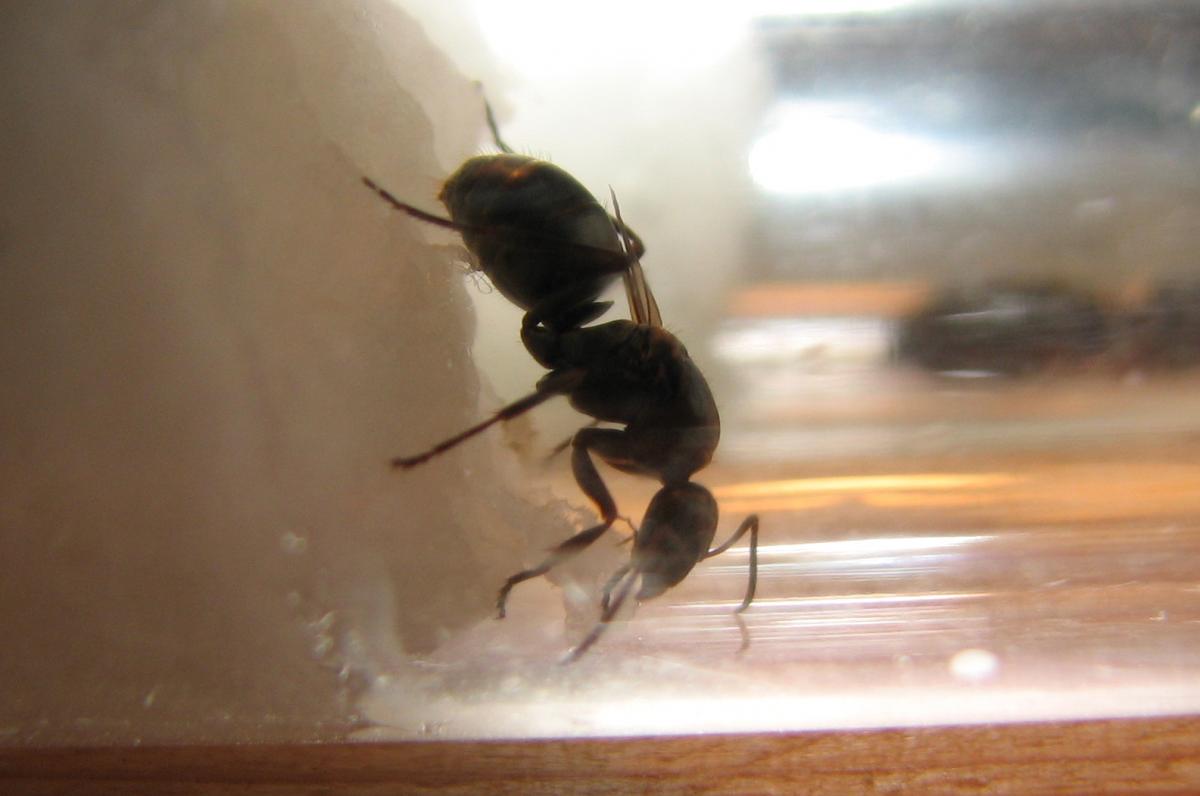1. Location of collection: under dead brush, trying to tunnel
2. Date of collection: 7-24-15
3. Habitat of collection: wooded area near lot
4. Length (from head to gaster): 3/8ths inch
5. Color, hue, pattern and texture: black to dark gray
6. Distinguishing characteristics: large
7. Anything else distinctive:
8. Nest description: n/a
note. this is identical to the componotus chroma. i caught the other day, except she is an eighth inch shorter. I'm assuming she is the same sp., just smaller?





